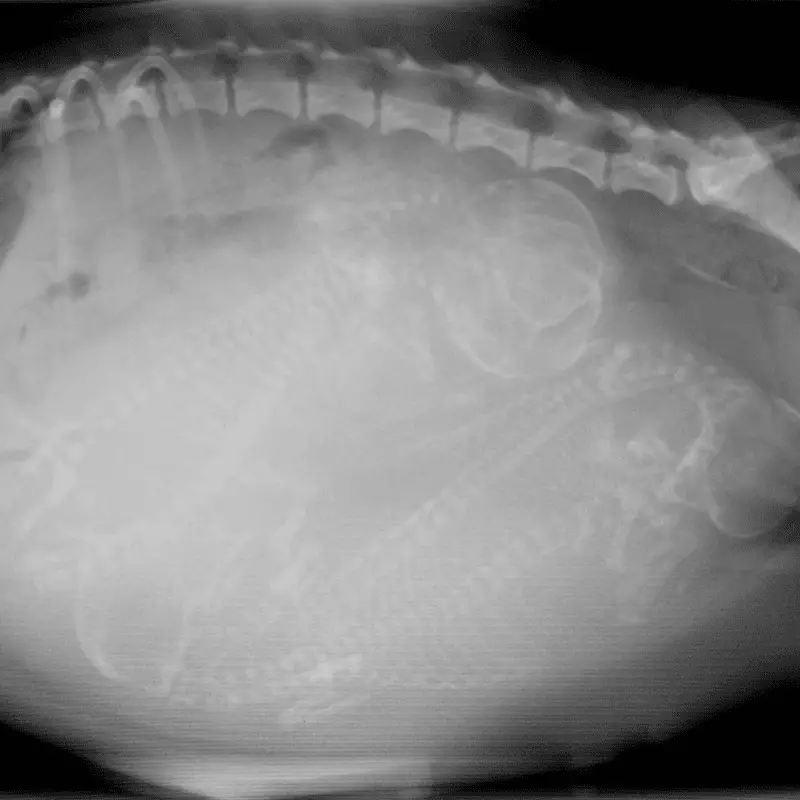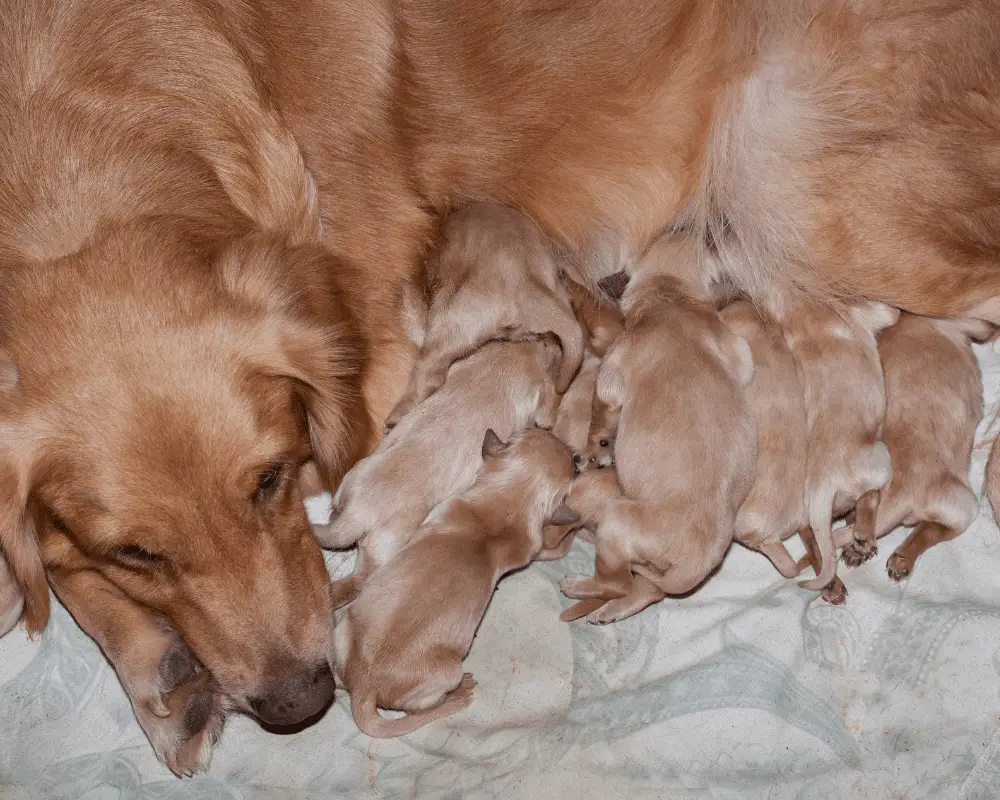Exciting times when your dog is about to have puppies! However, dog pregnancies can be complicated and confusing. If you do not know what you should do at the right time, dog pregnancies can become daunting. Understanding every aspect of a dog’s pregnancy is crucial if you think about breeding your dog. Small things, like how long the mother dog carries her children, can be essential and save you a lot of trouble.
The gestation period for the dogs is about 58-68 days. However, it is hard to predict the exact delivery time of your pet dog. The reason behind that is, it is difficult to calculate the precise date of conception. The pregnancy time frame can also vary considerably depending on the size of the dog and its breed.
If you do not have any experience in pregnant dogs, it can be difficult for you to understand whether your dog is pregnant until they are well into their term. Understanding the dogs’ reproductive cycle will help you guess whether your dog is pregnant or not.
The Reproductive Cycles of a Dog
Understand that not every dog experiences this reproductive cycle. If your dog has been neutered, the chances are it would not be showing any signs of going into heat. The intact female dogs, however, experience heat about every six months. Going into heat can depend and vary depending on the breed and the dog’s size. Every heat cycle lasts for about 18-21 days. The experienced breeders keep notes of these stages to determine the right time for breeding their dogs.
The four stages of the reproductive cycle of the female dogs consist of:
- Proestrus
- Estrus
- Diestrus
- Anestrus
The (Proestrus) first phase lasts for about nine days. It is when the female dogs start to attract the attention of the male dogs. However, the female dogs will keep declining the male dogs’ advances until they reach stage two.
(Estrus) Stage two involves bloody discharge and swelling of the vulva. This state can last from three days to 11 days. It is when a female dog entertains the attention of the male dogs. Some experienced breeders take the discharge and test it in the lab to ensure that their dogs are optimal for breeding.
The (diestrus) is the last and final stage of the entire cycle. This stage lasts for about 14 days. During this time, the discharge of the female dogs becomes even bloodier. The vulva of the dog starts to shrink back and become normal. The breeders do not permit their female dogs to mate with them anymore.
(Anestrus) is the time between two heat cycles. This period lasts for about six months.
Knowing the reproductive cycle details will help you understand the breeding period and the length of your pet dog’s pregnancy window.
How to tell if a dog is pregnant?
Like their human companions, the dogs do not have the chance to pick up the pregnancy test kits and perform a test. That means you have to depend on other ways to determine whether your dog is pregnant or not. There is no doubt that testing is the easiest way to tell whether your dog is pregnant or not. However, here are a couple of other methods that can help you in this matter.
Palpitation
It is one of the easiest yet convenient ways to ensure that your dog is pregnant or not. As the fetus of the puppies grows, the membrane around them grows as well.
At about 28-30 days into the pregnancy, the fluid-filled sacs feel like tiny grapes or golf balls. The size of the fetus will depend on the breed and the size of the dog.
Knowing the date your dog was born will help you determine the time for palpitation—saying that you should not perform this test by yourself at home. Always take the help of experienced veterinary professionals to do the test. Even the slightest mishandling can cause harm to the puppies. As the fluid-filled sacs change their shapes after one month or so, the test’s timing is critical.
Ultrasound
You can also use the ultrasound test to check up on the puppies. Take your dog to any experienced vet to perform the test. The ultrasound helps to determine any problems in the fetal heartbeats. It lets you know the number of puppies your female dog is carrying. It is also easier to count the puppies as their heartbeat is faster than their mother. This test can also be used to rule out other uterine distensions issues.
Hormone Test
It is one of the easiest ways to determine whether the female dog is pregnant or not. In this test, the veterinary professionals test the hormone relaxin level to determine whether your pet dog is carrying it or not. The relaxin is typically released from the placental tissues of the dog. So, its presence in the bloodstream of your pet helps to make a reasonably accurate guess.
However, your dog should be pregnant for at least 30 days for this test to bring accurate results. If you conduct a hormone test before this time, the results can be false negatives.
X-Rays
The X-ray is yet another effective measure that helps you to determine whether your dog is pregnant or not. An X-ray will also accurately count the number of puppies.

Stages of Dog pregnancy
The stages of pregnancy among the dogs are minimal compared to their human companions. So, if you are not watchful, your dog can complete one set of pregnancies and move to the next within a concise time frame. Here are some details about the stages that will help you keep tabs on them.
Month One
During this time, the embryo starts travelling, moving to the uterine horns around the 7th day. Around the 16th day, the embryo gets embedded in the uterine walls. The changes take place rapidly, and by the 22nd day, the fetus starts to take shape. The veterinarian practitioners should detect the heartbeat of the fetuses by the 30th day of the pregnancy.
During the first three weeks, most dogs do not show any symptoms. Keep a tab on the following factors to determine whether your dog is carrying or not.
- Clear vaginal discharge
- Decreased physical activities
- Enhanced appetite
- More loving behaviour
- Morning Sickness
- Slightly bigger nipples
Month Two
During this time, the development of the fetus becomes even quicker. The eyelids of the fetuses form by the 32nd day of pregnancy. You can see the toes in the ultrasound by the 35th day. By the 40th day of pregnancy, the claws start to form, and by the end of the 45th day, the skeleton and coat development are complete. After the 50th day of pregnancy, you can determine the number of puppies in a litter. Once a female dog reaches the 58th day of pregnancy, it will find a nesting place.
Your female dog’s signs of pregnancy should be showing during the second month of pregnancy.
- 20% to 50% of weight gain
- A bit increased appetite
- Behavioural changes
- Enhanced urination
- Enlarged and firm abdomen
- Frequent urination
- Odourless and clear vaginal discharge
- Visible movement of the puppies in the abdomen
Month Three
At the beginning of the third month, the female dog should be ready to give birth. The development of the puppies becomes fully complete around the 58 days of pregnancy. After this period, the puppies start to move to the whelping position inside the birth canal. During this time, your pet will lose any appetite and become restless. Keep tabs on the body temperature of your dog. It can drop about 12 to 24 hours before the pregnancy. Pacing, digging and shivering are other symptoms that you can witness in your dog just before giving birth.
How long does labour last in dogs?
The first stage lasts about 12-24 hours, which is not noticeable from the outside. You can keep tabs on this phase by noticing the changes in your dog’s behaviour.
The dogs start to deliver the puppies in phase two of labour. This stage can continue up to 24 hours as the female dogs keep on having one puppy at a time. That is why it is necessary to know the number of puppies during pregnancy. It will help you understand how long the labour will last and whether your female dog has any complications during birth. The placenta is delivered in stage three.

Like humans, the birthing process of the dogs can become equally, if not more, complicated. So, during this entire time, you should keep a careful watch on your dog. If you notice anything amiss, contact your veterinary professionals right away. One thing to look out for is if your dog has more than 2 hours of a gap between two puppies, then there could be some complications. Talk to a vet to solve these issues as soon as possible.












